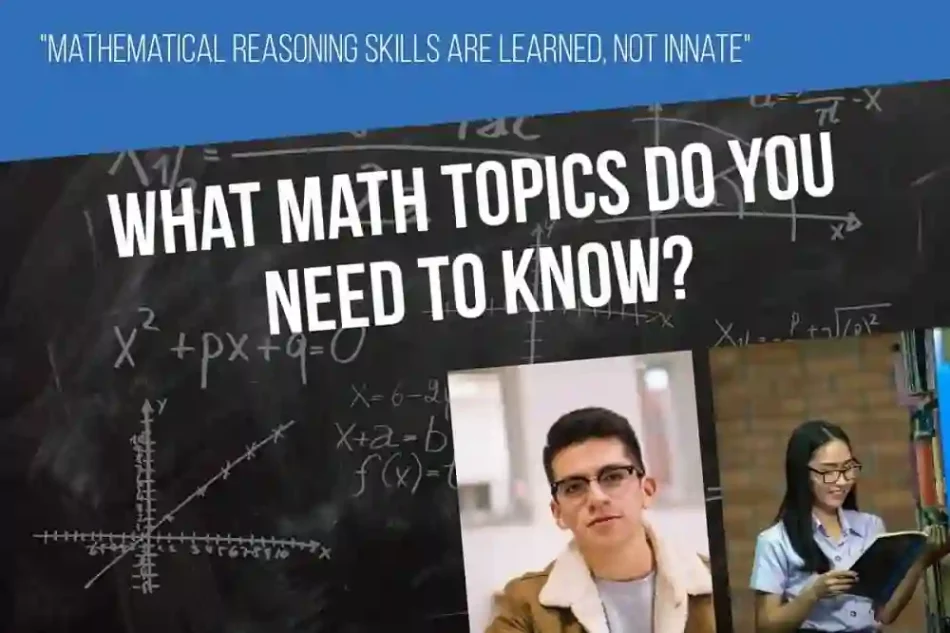In the world of mathematics, problem-solving is the cornerstone of mastering the art. “Crunching Numbers: Mastering the Art of Math Problem Solving” is a comprehensive guide designed to demystify the process of tackling mathematical challenges. Whether you are a student grappling with algebraic equations or a seasoned mathematician diving into advanced calculus, this article will provide insights and strategies to enhance your ability to crunch numbers with confidence and precision.
The Essence of Crunching Numbers:
Crunching numbers is more than a mere computational task; it’s an art that involves unraveling the patterns, logic, and relationships hidden within mathematical problems. To master this art, one must approach numbers with curiosity, treating each problem as an opportunity for exploration and discovery.
The Diverse Landscape of Mathematical Challenges:
Mathematics spans a diverse landscape of challenges, from basic arithmetic to complex calculus problems. Understanding this diversity is essential for tailoring problem-solving approaches to the specific nature of each challenge. A versatile problem solver recognizes the unique characteristics of different mathematical terrains.
Decoding Complexity:
Mathematical problems often present themselves as complex puzzles. Decoding this complexity involves breaking down problems into manageable components, understanding the relationships between elements, and unveiling the layers of intricacy. A systematic approach to decoding complexity forms the foundation for effective problem-solving.
Visualization: The Artist’s Palette for Problem Solving:
Visualization serves as the artist’s palette in the world of math problem solving. Create mental images, draw diagrams, and visualize mathematical concepts to gain insights into the structure of problems. Visualization not only aids comprehension but also provides a creative and intuitive approach to crunching numbers.
Strategic Approaches: Tools in the Problem-Solving Toolbox:
A mastery of math problem solving involves a diverse set of strategic approaches. From systematic trial and error to working backward and employing pattern recognition, these tools form the problem-solving toolbox. A well-equipped mathematician recognizes the versatility of these strategies and applies them judiciously based on the nature of the problem at hand.
Simplicity as the Hallmark of Mastery:
Simplicity is the hallmark of mastery in the art of math problem solving. Strive for solutions that are not only accurate but also elegantly simple. Avoid unnecessary complexities and convoluted methods, aiming for clarity and efficiency in your approach. Simplicity reflects a deep understanding of mathematical principles.
Pattern Recognition: Unlocking the Mathematical Code:
Pattern recognition is the key to unlocking the mathematical code embedded in problems. Train yourself to identify recurring sequences, relationships between numbers, and hidden structures. Recognizing patterns accelerates problem-solving and reveals the inherent order within mathematical challenges.
Persistence: The Determined Sculptor of Solutions:
Persistence is the determined sculptor that shapes solutions out of mathematical challenges. Approach problems with a tenacious spirit, understanding that persistence often leads to breakthroughs. Learn from mistakes, iterate on solutions, and view challenges as opportunities for growth and refinement.
Effective Time Management: Maximizing Efficiency without Sacrificing Precision:
Effective time management is the maestro’s baton in the orchestration of math problem solving. Allocate time based on the complexity of each problem, ensuring a balance between efficiency and precision. Time management is a strategic conductor that guides the mathematician through the symphony of problem-solving tasks.
Reflective Practice: Learning and Evolving Through Each Solution:
Reflective practice is the mathematician’s journal, capturing insights and learnings from each problem-solving journey. After solving a problem, take a moment to reflect on your approach, identify strengths, and consider alternative strategies. Reflective practice transforms each solution into a stepping stone for continuous learning and evolution.
Collaboration: Orchestrating Harmonies with Peers:
Collaboration is the orchestra where harmonies of mathematical understanding are orchestrated. Engage in collaborative problem-solving sessions, share insights with peers, and benefit from diverse perspectives. Collaboration not only enriches the problem-solving experience but also fosters a sense of camaraderie within the mathematical community.
Celebrating Numerical Triumphs: A Symphony of Achievements:
Every solved mathematical problem is a triumph worth celebrating, a note in the symphony of numerical achievements. Acknowledge and celebrate your successes, reinforcing a positive mindset and building confidence for future problem-solving endeavors. Numerical triumphs are the crescendos that mark your journey toward mastering the art of crunching numbers.
Conclusion:
“Crunching Numbers: Mastering the Art of Math Problem Solving” encapsulates the essence of approaching mathematics as an art form. By demystifying the process, recognizing the diverse landscape of challenges, and deploying versatile strategies, individuals can elevate their ability to crunch numbers with confidence and precision. Remember, mathematical problem solving is not just about finding answers; it’s about the joy of discovery, the satisfaction of unraveling patterns, and the fulfillment of mastering the artistry within the realm of mathematics. As you embark on your journey of crunching numbers, let this guide be your companion, helping you navigate the intricate landscape of mathematical challenges with the finesse of an artist and the precision of a mathematician.








